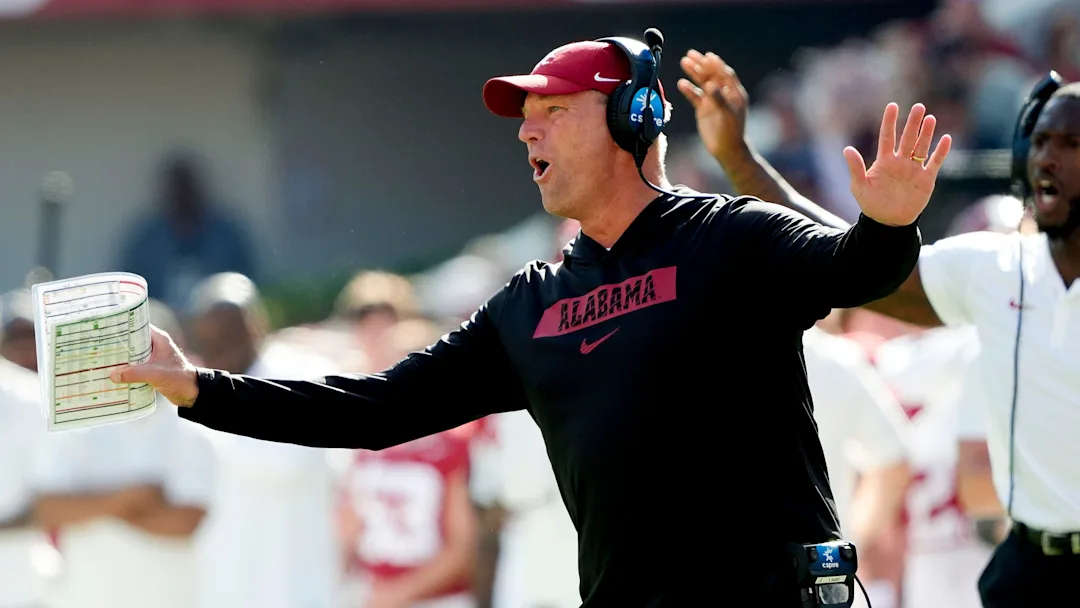The Southeastern Conference (SEC), long heralded as one of college football’s most competitive and fiercely contested leagues, is on the brink of a significant shift in its scheduling format. Rumors and reports have intensified over the past year regarding the possibility of the SEC adding a ninth conference game to its football schedule starting as early as the 2024 season. This change, proponents argue, could increase the quality of competition and generate more revenue, but it has also raised concerns about player health, competitive balance, and—critically—the impact on College Football Playoff (CFP) selections.
At the center of the debate, Alabama head coach Nick Saban has urged a more cautious approach to the proposed addition of a ninth SEC game. Known for his meticulous preparation and deep understanding of college football’s evolving landscape, Saban’s perspective carries considerable weight both within the SEC and across the national college football conversation. His call for prudence highlights the complex interplay between maintaining the integrity of the conference’s championship, safeguarding player welfare, and navigating the ever-more critical College Football Playoff system.
The SEC’s football schedule has traditionally included eight conference games, balanced between home and away matchups, with a non-conference schedule that typically includes three games. Adding a ninth conference game would reduce the number of non-conference contests, altering the dynamic of the entire season. While this adjustment could yield more high-stakes games within the SEC—arguably the most powerful football conference in the nation—it also risks narrowing the margin for error for teams vying for a playoff spot.
Nick Saban’s caution stems from several important factors that coaches and administrators must weigh carefully before committing to such a shift. First, the physical and mental toll on student-athletes is a significant concern. College football is an inherently demanding sport, and players already face a grueling schedule filled with intense preparation, travel, and competition. The prospect of one additional hard-hitting conference game each season raises questions about fatigue, injury risk, and the long-term health of players. Saban has long advocated for policies that prioritize player safety and wellbeing, and this philosophy influences his stance on the ninth game proposal.
Beyond player health, there is a strategic consideration in how a ninth conference game might affect teams’ chances in the College Football Playoff. The SEC has historically produced multiple playoff contenders—often dominating the four-team playoff landscape—but this dominance has sometimes been jeopardized by the strength of schedule and conference standings. By adding a ninth game, the margin for error decreases; a single loss can carry greater weight in the eyes of the selection committee. For a team like Alabama, which often juggles the dual challenges of a fierce SEC schedule and the pressure to secure a playoff berth, this additional game could complicate their path forward.
Furthermore, the addition of a ninth conference game may crowd out the ability to schedule marquee non-conference matchups that bolster a team’s resume. Non-conference games are often strategically scheduled to balance competitive challenge with the opportunity for a decisive win. They provide variety and excitement for fans and players alike, allowing teams to showcase their talents beyond the SEC’s demanding slate. Saban recognizes that reducing these games might limit opportunities for national exposure and diminish the flexibility coaches currently enjoy in shaping their schedules.
Saban’s advocacy for caution also reflects broader concerns about the integrity of the sport and the College Football Playoff’s selection process. The CFP committee evaluates teams on multiple criteria, including win-loss records, strength of schedule, head-to-head results, and conference championships. Adding an extra conference game could skew these metrics, creating an uneven playing field in evaluating teams from different conferences that do not have a ninth game. This raises the specter of disparity and potential controversy in the playoff selection process, undermining the goal of crowning a truly national champion.
Beyond the tactical and operational aspects, there are financial incentives underpinning the SEC’s interest in a ninth game. The conference stands to gain increased television revenue from the additional high-profile matchups, given the SEC’s lucrative media rights deals. Enhanced exposure and more marquee games also translate into greater ticket sales and merchandising opportunities. While these economic benefits are undeniable, Saban’s call for caution underscores the need to balance financial motivations with the long-term sustainability and fairness of the sport.
Saban’s perspective resonates amid a broader national discussion about college football’s future scheduling trends. Other Power Five conferences, such as the Big Ten and ACC, have debated or implemented similar scheduling expansions, driven by factors including television contracts, playoff considerations, and efforts to increase competitiveness. Yet, the SEC’s stature and influence make its decision particularly impactful. Changes adopted by the SEC often set the tone for the rest of college football, making Saban’s prudent approach a key voice in the national dialogue.
It is important to consider the implications for recruiting as well. The SEC has long been a recruiting powerhouse, attracting top talent with its tradition of excellence and exposure to high-level competition. An additional conference game might be viewed by recruits and their families as a test of physical endurance and commitment, potentially influencing decisions on where athletes choose to play. Coaches like Saban are keenly aware of the recruiting landscape and the importance of maintaining a schedule that challenges players without overwhelming them.
The debate over the ninth game also intersects with discussions about playoff expansion. Many advocates argue that as the College Football Playoff expands beyond its current four-team format, the need for an additional conference game diminishes. A larger playoff field could accommodate more teams from the SEC and other conferences, reducing the pressure to maximize conference games for the sake of résumé-building. Saban and other coaching voices suggest that the timing of adding a ninth game should be carefully aligned with playoff expansion decisions to avoid unnecessary disruption.
Critics of the ninth game worry that it could dilute the importance of the SEC Championship Game. The current structure allows teams to recover from an early conference loss and still earn a championship berth. With a ninth game, an additional loss could jeopardize championship aspirations, potentially reducing the stakes and excitement of the SEC title contest. Saban’s cautious approach ensures that the championship game retains its prestige and significance in the broader college football narrative.
Moreover, player welfare has become a paramount issue in college athletics, with increasing attention on concussion protocols, recovery times, and overall workload management. The conversation about adding more games cannot ignore the evolving scientific understanding of athlete health. Coaches like Saban are mindful of their responsibility not only to win games but to protect their players’ futures. Balancing competitive ambitions with ethical considerations remains a delicate and critical challenge.
The SEC is widely regarded as the gold standard of college football competition, and any major change to its schedule will have ripple effects across the sport. Saban’s cautionary stance serves as a reminder that changes driven solely by revenue and competition risks overshadowing the welfare of players and the fairness of competition. His leadership invites stakeholders—conference officials, coaches, players, and fans—to consider all dimensions of this pivotal decision carefully.
As discussions continue behind closed doors in SEC boardrooms and media speculation grows, Alabama’s head coach maintains that any shift to a nine-game conference schedule must be deliberate and measured. The goal, he emphasizes, is not to rush into changes for short-term gain but to preserve the integrity and competitive balance of the SEC while safeguarding the health and well-being of the student-athletes who make college football the thrilling spectacle it is.
In the end, the debate over the SEC’s ninth football game encapsulates the broader tensions shaping college football today: the drive for increased competition and revenue, the pressures of playoff qualification, and the paramount need to prioritize player safety and fairness. Nick Saban’s voice of caution serves as an anchor amid these competing forces, urging all involved to weigh carefully the true costs and benefits before making a decision that will shape the future of SEC football — and perhaps the entire sport — for years to come.



